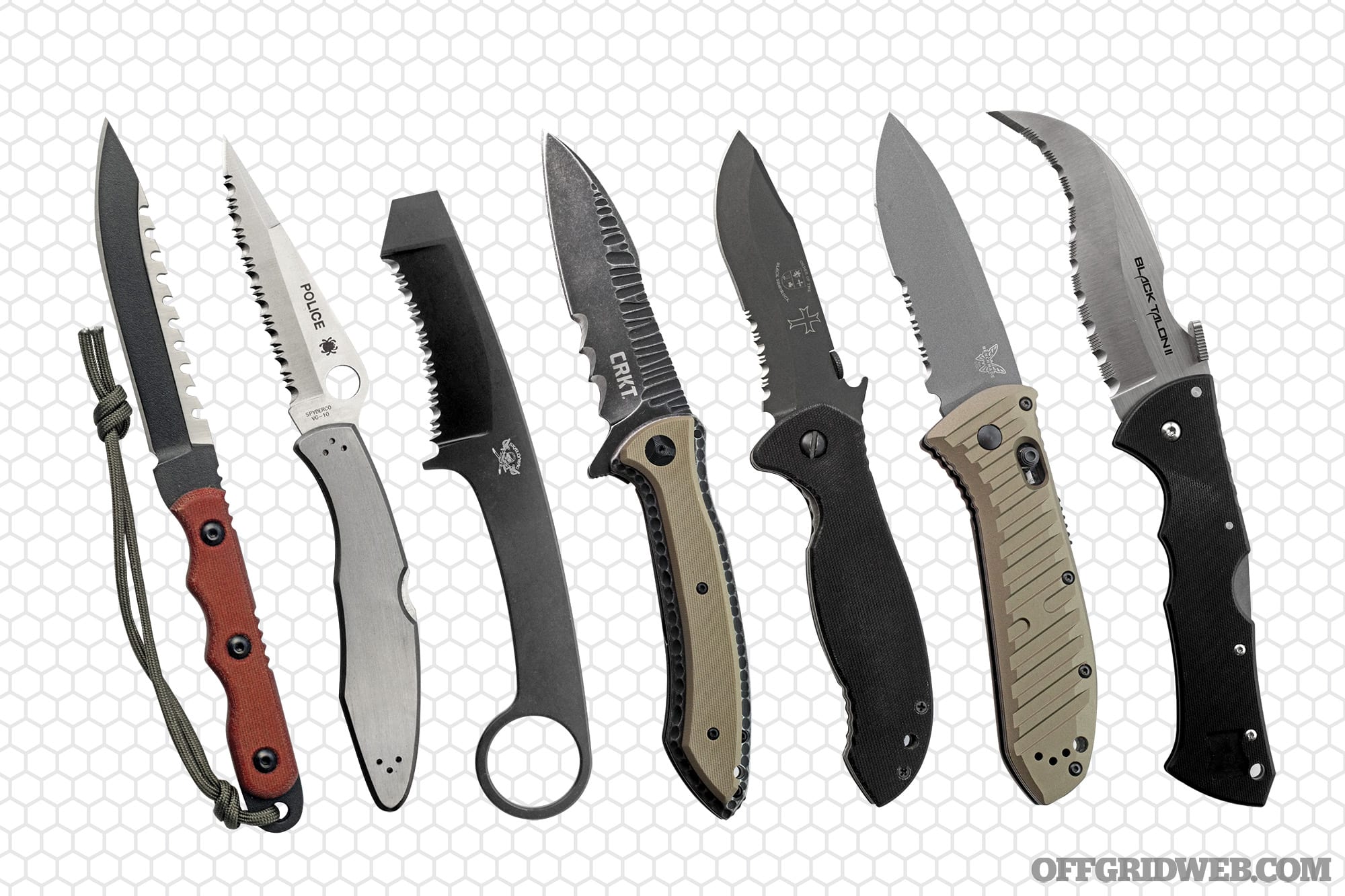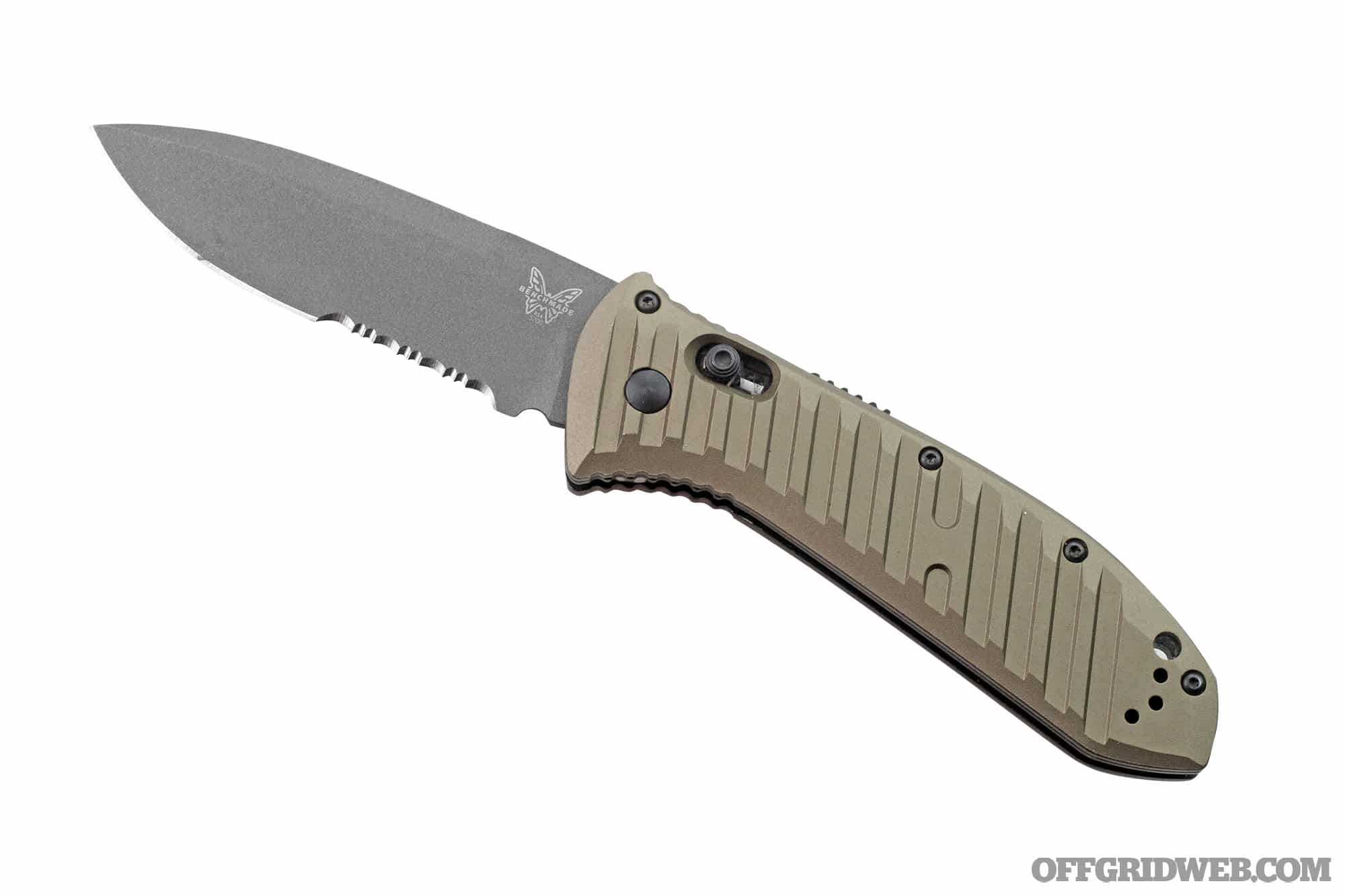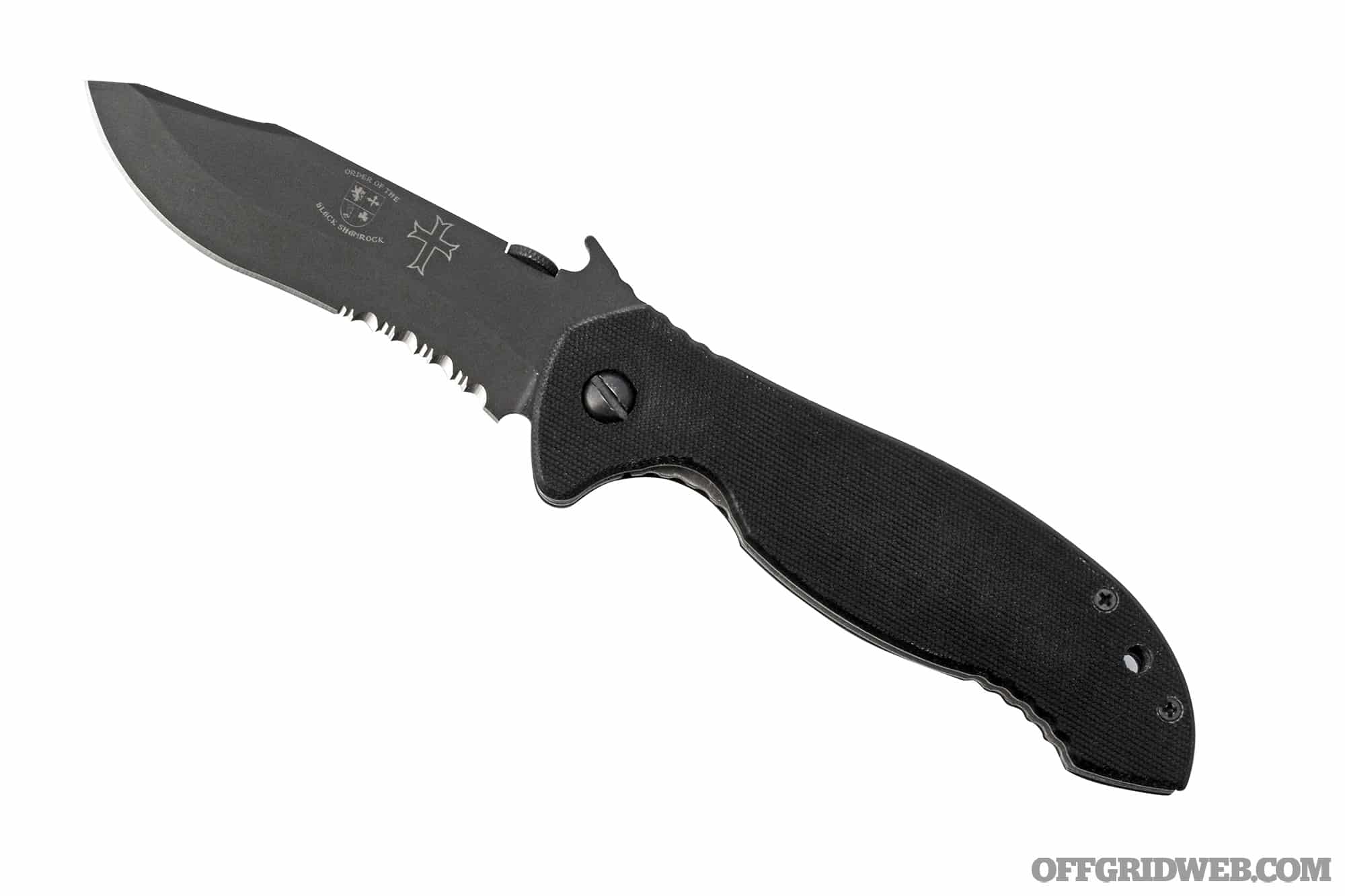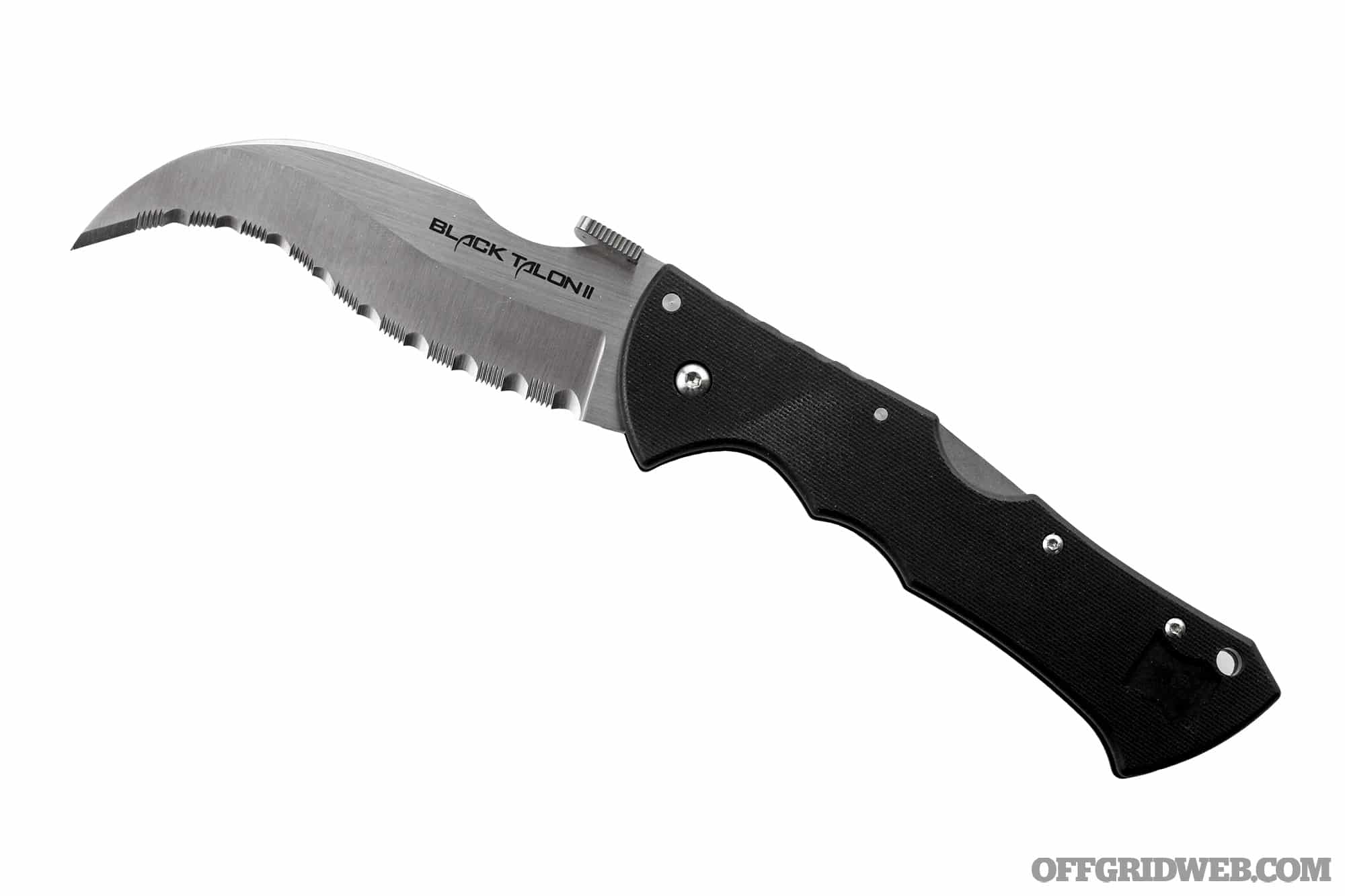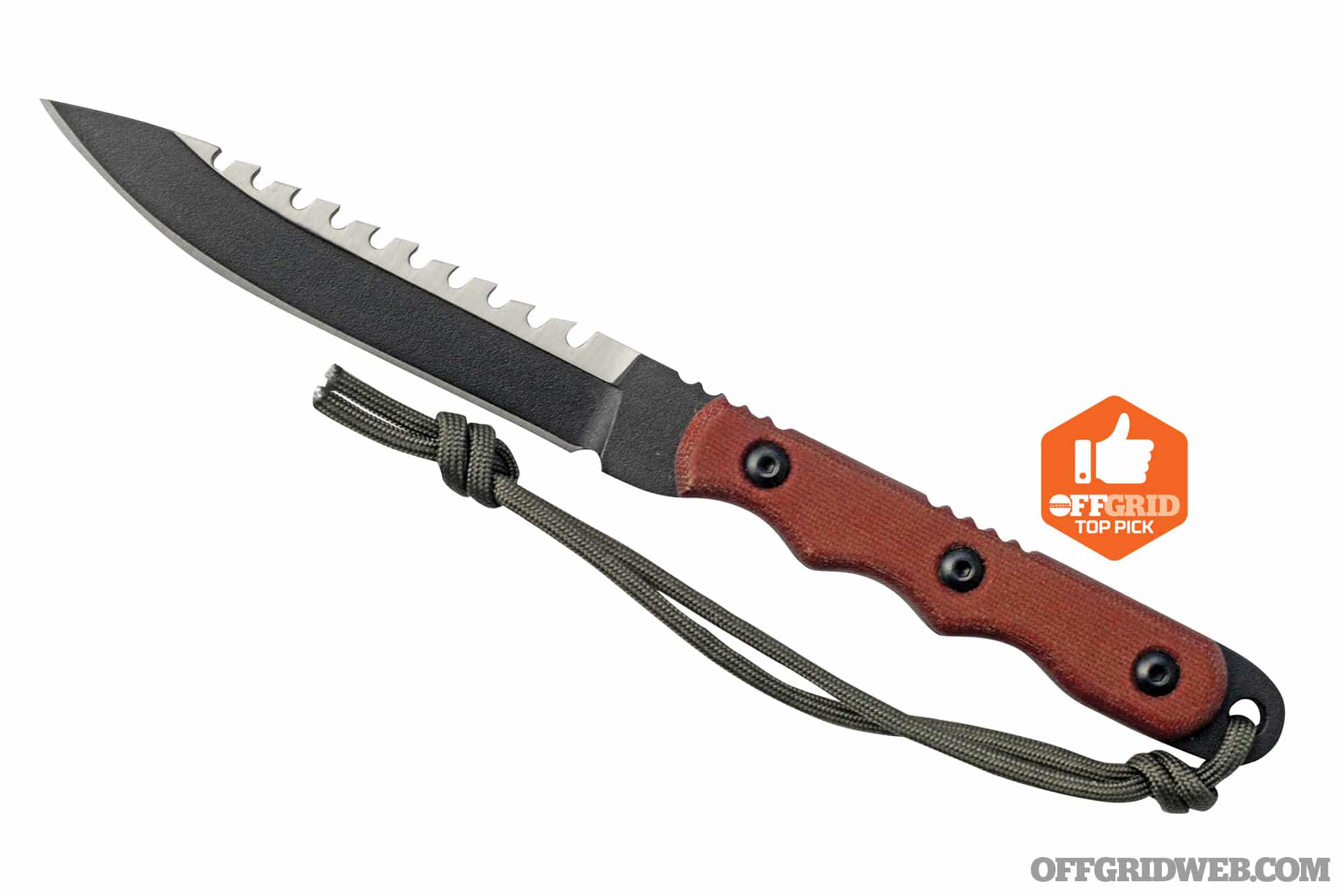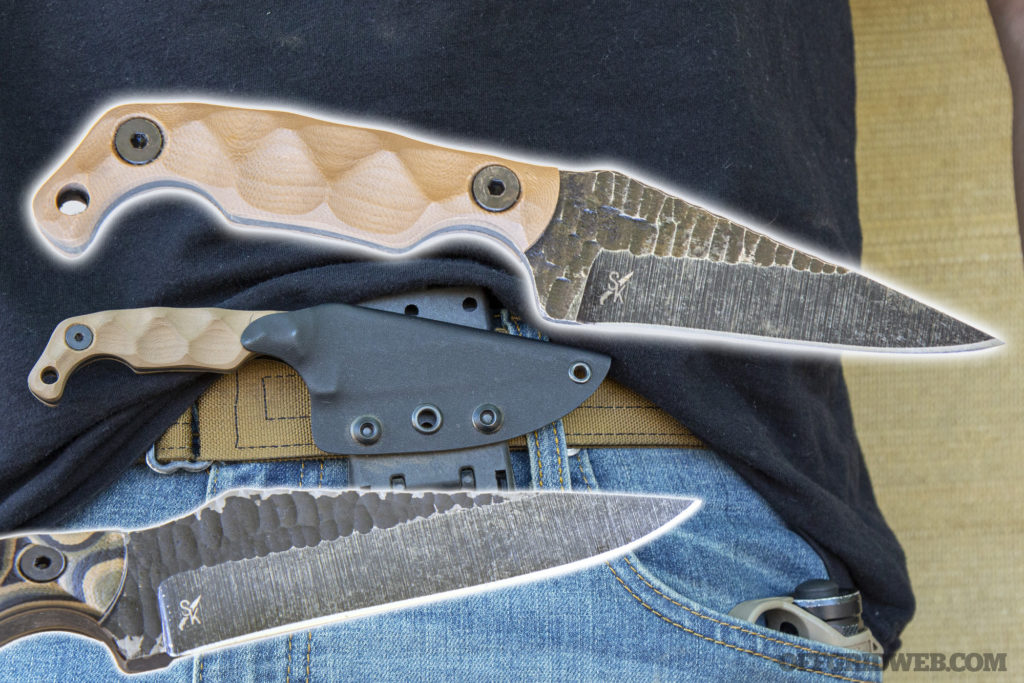When it comes to serrated blades, there are two schools of thought: Those who love them and those who think they’re only good for cutting into a loaf of bread. Gluten tolerances aside, let’s look at a few knives that are fully or partially serrated. A wise knifemaker once made the very logical and coherent argument that “if a blade is properly ground and sharpened, you don’t need serrations.” He was right, to a point. If you solely use your knives for opening cardboard boxes, shaving arm hair to impress your friends, slicing pepperoni, or opening envelopes, then you probably don’t need a serrated knife. If you take your knives to realms beyond that in hard use, you may appreciate the benefits of a serrated or partially serrated blades.
If you’ve heard about carbides in steel, the actual microscopic components that allow your steel blade to cut, you may have heard them described as resembling shark’s teeth or serrations when viewed under a microscope. A serrated blade magnifies this concept and improves upon it.
Some blades are completely serrated from tip to hilt. These are usually special-purpose blades designed for rescue or similar tasks that involve a lot of cutting of fabric or thick ropes in a maritime environment that’ll quickly dull a typical non-serrated knife.
Outside of those duties, there are other options in the form of partially serrated blades or blades that have serrations on the spine. A partially serrated knife can give the user the best of both worlds. You can make a clean cut with the straight edge or turn to the serrations for more serious work. Many users of partially serrated blades in the military have noted that when the non-serrated edge had dulled, the serrations kept on cutting with no problem.
Serrations on the spine make a lot of sense on a fixed blade in most cases. Use the non-serrated blade for most normal tasks but should you need to use your knife to cut sisal rope, the aluminum fuselage of an aircraft, or anything else that will not yield to the plain edge of your knife. The only drawback here can be some overly zealous handle shapes that may prevent you from turning the knife over in your hand to use the back edge like a saw.
The bias against serrations can be understood from a custom knife collector’s standpoint as it alters the clean lines of the blade. Yet, don’t let that mentality cloud your vision as a user if you’re looking for something to keep you going in the great outdoors.
Skallywag Tactical Dive/Rescue Tool
Handle Material
440C
Blade Steel
440C
Blade Length
2.25 inches
Overall length
8.25 inches
Weight
4.3 ounces
Price
$125
Notes
Part karambit, part probe point and all serrated, this blade wreaks havoc on just about any material you throw at it short of other steels and the like. This one-piece blade is completely constructed of 440C stainless steel and has a black PVD coating. The Kydex sheath is well made and firmly secures the knife, but its hardware may be prone to rusting if left in a maritime environment for extended periods of time. This knife represents a great bargain with an MSRP of $125. That’s not something we typically touch on when evaluating knives, but the price really is unbelievably low for a piece like this.
Pros:
- The serrations are perfect for working on tough cutting chores underwater.
- A generous-sized ring (1.25 inches) aids in retention while wearing gloves.
- PVD coating protects the 440C blade from corrosion.
Cons:
- The sheath hardware isn’t impervious to rust.
- The flat probe point is great for what it is, but a pointed version would make an impressive EDC karambit.
Benchmade Auto Presidio II
Handle Material
Aluminum
Blade Steel
CPM-M4C
Blade Length
3.72 inches
Overall Length
8.72 inches
Weight
6.32 ounces
Price
$300
Notes
For the Auto Presidio II, instead of pushing the button inward, you retract it downward as if you were unlocking an Axis lock knife. This mechanism is backed up by a secondary lock on the back of the handle that when engaged leaves you with a fixed blade for all practical purposes. The Auto Presidio II features a grippy tread molded into the aluminum handles that have a subdued bronze anodized finish. The serrations as well as the plain edge of the blade are razor sharp out of the box. It ships with a quality sheath equipped with a Malice clip for attaching to a belt or plate carrier.
Pros:
- CPM-M4 is a high-quality tool steel that offers hardness and excellent edge retention.
- Pocket clip is reversible.
- Serrations are sharp and chisel ground with no secondary bevel.
Cons:
- Somewhat heavy. If you’re wearing extremely light pants you may want to put it in its sheath.
- CPM-M4 is a hard-use steel, but with a content of less than 4-percent chromium, it’s hardly stainless. It has the potential to rust and is difficult steel to sharpen.
CRKT APOC with Veff Serrations
Handle Material
G10
Blade Material
8CR13Mov
Blade Length
3.98 inches
Overall Length
9 inches
Weight
6.2 ounces
Price
$250
URL
crkt.com
Notes
CRKT’s APOC was designed by custom knifemaker Charlie Ochs. This version is outfitted with Veff Serrations, a unique take on a serrated edge that seems to be growing in popularity. Intended to cut through fabric as if it were made of cheese instead of fibers, it’s essentially a frame lock with added G10 scales. The blade is opened flipper style, complete with IKBS bearings. Its profile is somewhere between a Wharncliffe and a drop-point, meaning it maintains the strength of the blade fully to the tip.
Pros
- The Veff serrations are easier to sharpen than most and have the cutting power of a gut hook.
- Flipper action is impressive, and the IKBS system gives around a 99-percent success rate.
- Surprisingly sharp and stabby due to Krein’s angles of sharpening and ability to make for a thin edge.
Cons
- The steel used here is decent, but requires more care than the super steels out there.
- Pocket clip is non-reversible.
- As effective and consistent as the flipper is, we still like a secondary opening mechanism.
Emerson Knives Black Shamrock
Handle Material
G10
Blade Material
154CM
Blade Length
3.8 inches
Overall Length
9 inches
Weight
6 ounces
Price
$260
Notes
Ernest Emerson started his own fraternity of like-minded individuals, and the Order of the Black Shamrock had their own knife designed for its members. This is an elongated recurve in a liner lock with optional serrations. The blade is 154 CM and is equipped with the Emerson Wave Shaped Opening Device. Each knife is serial numbered and can only be ordered by members of the Order. This may be one of the harder-to-find knives in this lineup.
Pros:
- Emerson’s serrations are some of the best in the industry.
- The recurve pattern to the blade gives the cutting power of a slightly longer blade into a more compact design.
- Very ergonomic and comfortable to use all day long
Cons:
- Some users don’t like the Wave-shaped opening feature because it tends to shred clothing pockets after a while.
- These knives are made once a year in small batches, and you must be a member of the Order of the Black Shamrock in order to purchase one.
Spyderco Police
Handle Material
Stainless steel
Blade Steel
VG10
Blade Length
4.125 inches
Overall Length
9.38 inches
Weight
5.6 ounces
Price
$230
URL
spyderco.com
Notes
Spyderco may have built the first truly modern tactical knife with the Police Model. It has the one-handed Spyder-hole for opening, a four-way pocket clip for left, right, tip-up or tip-down carry, a slim profile, lock back, lanyard hole, and on this version a fully serrated knife blade. Spyderco may not have invented all of those features but were the first company to put them all together in a factory knife. The Police Model was intended for law enforcement officers in the execution of their duties, whether cutting open seat belts, cutting zip-ties, opening boxes, or as a last-ditch self-defense tool.
Pros:
- Spyderco’s serrations practically set the bar for every other knife company out there.
- The handle shape is extremely ergonomic.
- Spyderco’s round hole makes for a fast manual opener.
Cons:
- The stainless steel handles can be slippery to hold.
- A folding knife with a blade in excess of 4 inches may be forbidden in some cities, states, etc. Please research local knife laws before carrying.
- Even though it’s a classic design, it lacks a lanyard hole due to the length of the blade and economy of the handle.
Cold Steel Black Talon II, Serrated
Handle Material
G10
Blade Steel
S35VN
Blade Length
4 inches
Overall Length
9.5 inches
Weight
4.8 ounces
Price
$185
Notes
The Cold Steel Black Talon II with serrated edge is a monster of a pocketknife designed for self-defense. It opens by an extra-large square-shaped thumb disk that can perform double duty as a pocket opener when needed. Constructed of S35VN steel, this blade is serrated from front to tear in a reverse-S pattern very similar to the Spyderco Civilian. Only this knife is more substantial in just about every way with a thicker tip and a more squared-off handle.
Pros:
- This reverse-S blade style is executed to perfection on this one, giving the effect of a somewhat longer edge in a more compact design
- The Tri-Ad lock is one of the strongest locking mechanisms used in modern pocketknives.
- The serrations look simplistic but are extremely effective. This is helped in part with the S35 steel.
Cons:
- The blade has a tip in more of a hawksbill pattern, but doesn’t allow for an effective forward stab. This is a pure slicer.
- Its pocket clip may be reversible, but it’s extremely tight and requires a break-in period before you can carry it normally clipped to the pocket.
TOPS Knives Ranger Bootlegger II
Handle Material
G10
Blade Steel
1095
Blade Length
5 inches
Overall Length
9.6 inches
Weight
7.3 ounces
Price
$190
Notes
TOPS Knives took one of their more popular designs, the Ranger Bootlegger, and added serrations to the top of the spine for a great multipurpose fighting and outdoor knife. At first glance, you might find the blade stock to be extremely thick for a boot knife at ¼ inch, but there’s a reason for it: the serrations on the spine. These serrations are unique to TOPS, and while they don’t have that scalloped contour that all the others we’ve looked at have, they’re 100-percent serious in their own right. These ones won’t just help you get started on a thick piece of hemp. This serrated knife cut through everything we threw at it from plastic to wood to aluminum.
Pros:
- The serrations are amazing.
- The contoured G10 handles aren’t overly done in regard to finger grooves; you can roll this one upside down in your hand and comfortably use the sawteeth like a hand saw.
Cons:
- Unfortunately, in spite of the coated blade, 1095 will rust in a maritime or even very humid environment.
- That thick edge can make it difficult to maintain.
Related Posts
The post Pocket Preps: Serrated Knife Buyer’s Guide appeared first on RECOIL OFFGRID.



